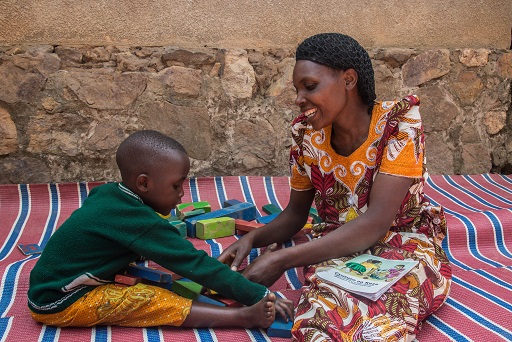Recommended
This blog is part of a series, following technical workshops CGD hosted back in June 2022 with the World Bank’s Early Learning Partnership (ELP), aimed at informing the priorities and approach of the newly-launched World Bank Group (WBG) Invest in Childcare initiative. Read part one of the series here.
Last month, we published a blog making the case for quality childcare as a “best buy” investment: one that can increase labor force participation, productivity, and income among workers, as well as improve broader well-being among children, caregivers, and communities. Our first blog summarized findings from return-on-investment (ROI) studies led by researchers at Fraym, American University, and the Open University. This one highlights key questions that emerged from a discussion on ROI analyses, all of which CGD researchers will be taking into consideration as we work to synthesize existing ROI evidence across contexts in the coming months.
1. Which contexts?
The ROI for childcare will vary by context. A country with a lower labor force participation rate among women at baseline (e.g., Nicaragua) will likely see returns in terms of women entering the labor force, while a country where women are already present in the labor market may see returns in terms of productivity gains or better quality employment (e.g., Vietnam and Kenya).
Once we map existing ROI evidence across country contexts, then we should be able to group countries that share similar characteristics, such as income level, level of women’s labor force participation/productivity, or commonly used childcare support approaches (e.g., a reliance on grandparents or older siblings to provide care). In the absence of fully comprehensive data across and within countries, grouping contexts that share similar baseline characteristics can allow us to extrapolate using existing data and hypothesize what childcare’s ROI may be in similar countries lacking data.
2. Which people—and which outcomes?
The approaches summarized in our first blog focused on caregivers’—and primarily mothers’—employment outcomes, but a fully comprehensive approach to calculating childcare’s ROI would also encompass benefits to children, other caregivers such as fathers, grandparents, siblings, and community members (especially in contexts where the household unit goes beyond the nuclear family and/or community members provide childcare support for one another through informal networks), family welfare and business productivity.
For children, the earliest years are a critical period for development and children need nurturing care, which includes stimulation, protection from stress, adequate healthcare and nutrition, and opportunities to play and learn. Quality childcare can help build foundational skills that yield lifelong benefits, including better education outcomes, more and better skills, and improved employment and earning prospects as adults.
Access to childcare also increases opportunities for other household members to participate in the labor market and can increase school attendance of older siblings, especially girls, who often take on care responsibilities. Increasing participation in school may in turn help to reduce early marriage and adolescent fertility. Finally, access to childcare benefits the private sector through increased firm productivity and the economy through increased growth and tax revenue.
Our workshop’s participants shared resources that capture this broader range of outcomes (assessing mainly the singular outcomes instead of taking a comprehensive approach), including this study from the United States, that examines childcare’s impacts on children’s future high school graduation rates and college attendance, and these studies examining the toll and reward of family caregiving in South Korea. Too few studies take a fully comprehensive approach to measuring the impacts of childcare on the wide range of people it can benefit, and few connect the dots from improved outcomes to impacts on macroeconomic development/growth. Prioritizing these dimensions of analysis would help position future research on childcare as more compelling to ministers of finance, private sector leaders, and other key decision-makers and persuade them to dedicate increased resources to childcare as both a critical public good and a means of increasing firm productivity.
In addition, as an extension to the childcare work, we should look at the return from investing in the care economy more generally, including not only childcare but also care for older and disabled persons. It is important for researchers focused on childcare to position their analyses within the broader context of all paid and unpaid care work. Demand for care will vary by context; for example, even if caregivers are relieved of some of the time they devote to childcare, they may still have responsibilities caring for their aging parents or a sibling living with a disability. We need to look at the totality of care responsibilities that people—disproportionately women and girls—face in order to develop policy solutions that maximize potential returns on investment.
3. Which measures?
The data that researchers collect to inform ROI calculations may vary depending on how questions are posed to survey respondents and/or framed in analysis. For example, asking at a high level, “Who is the primary caregiver in your household?” may paint a different (and more limited) picture than a more detailed documentation of the specific caregivers who spend each hour of the day with the child.
Including questions around caregivers’ preferences is also important. For example, researchers can compare how much time an individual currently spends providing childcare versus how much time that person wants to provide childcare—and allow for the development of tailored policy solutions that help to fill that gap. Grounding policy solutions in an understanding of how and where caregivers want children to be cared for is also critical; incorporating caregivers’ preferences into the design of childcare provision models will help to maximize take-up, which will in turn increase ROI. As a next step, childcare researchers could reconvene to compare the questions they are currently posing—whether in individual studies or through large-scale household surveys such as the Demographic and Health Surveys (DHS), Living Standard Measurement Study (LSMS), or Multiple Indicator Cluster Surveys (MICS)—and seek to align and strengthen their survey modules and other data collection tools through sharing lessons learned.
Although demand for childcare is growing, governments still need to be convinced to prioritize childcare, especially in the context of increasingly constrained resources. Context-specific data on the return on investment (ROI) opportunity can help elevate childcare as a priority among governments, philanthropists, private sector investors, and others—and, in doing so, maximize the reach and impact of investments in childcare.
Stay tuned for more comprehensive ROI analysis, as well as blogs on other topics covered through the technical workshops.
Disclaimer
CGD blog posts reflect the views of the authors, drawing on prior research and experience in their areas of expertise. CGD is a nonpartisan, independent organization and does not take institutional positions.






